
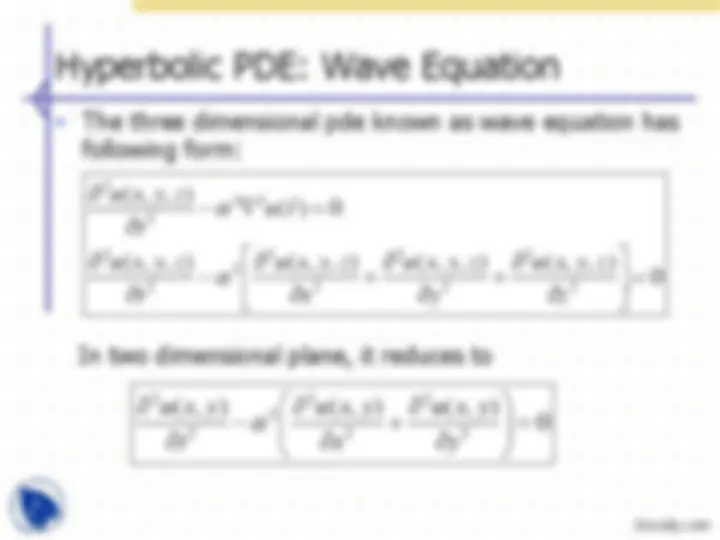
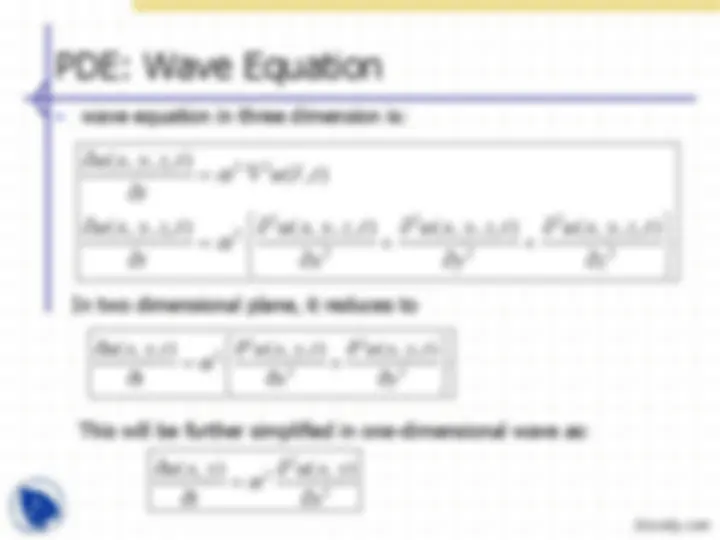

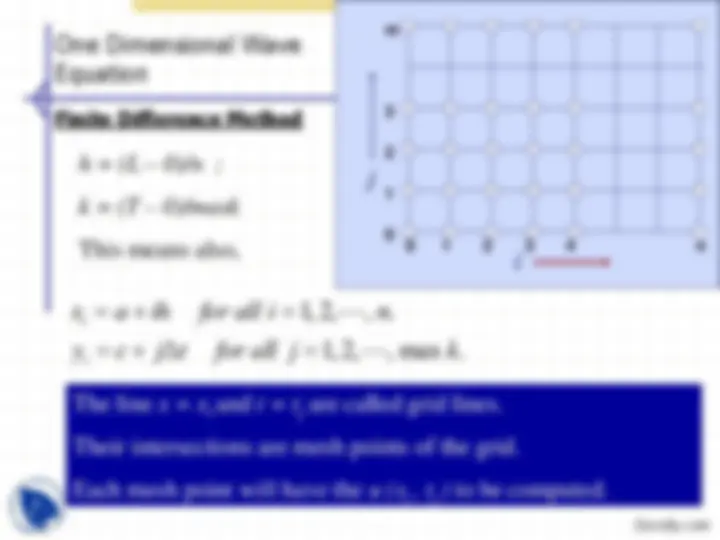
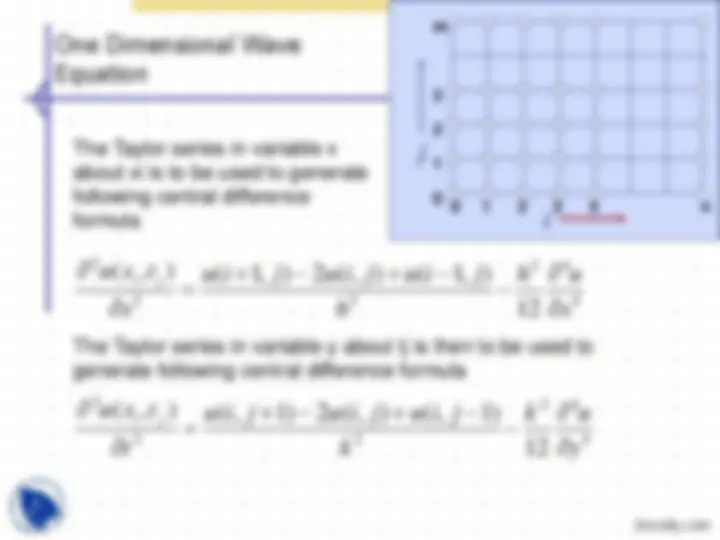
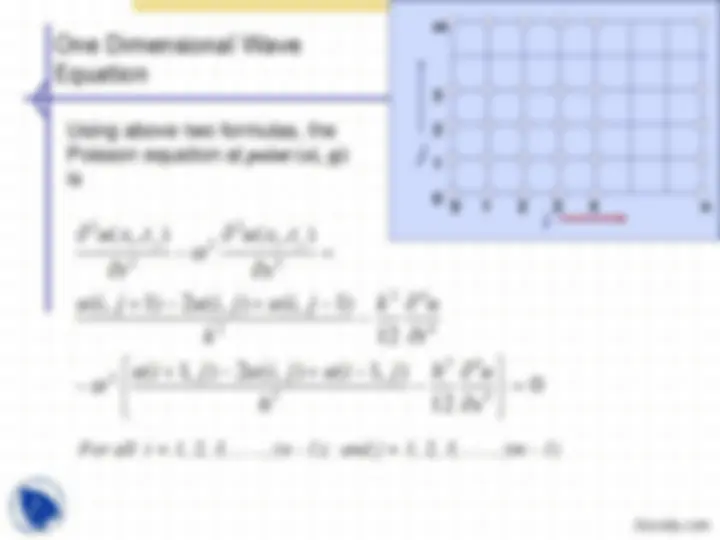
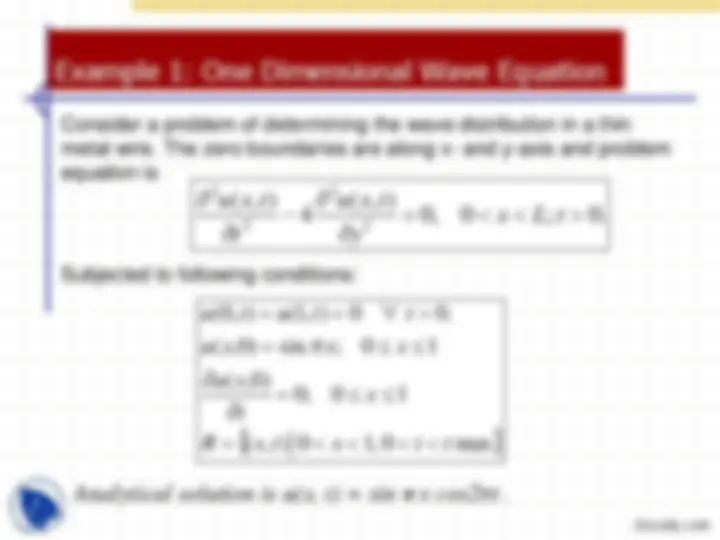


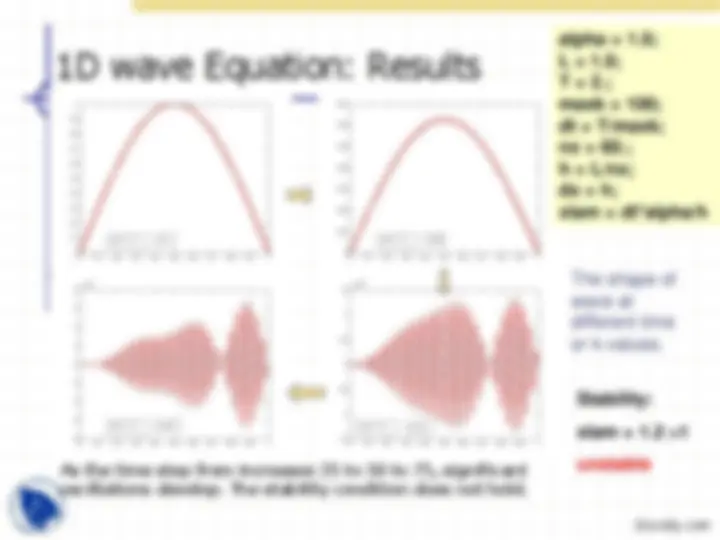
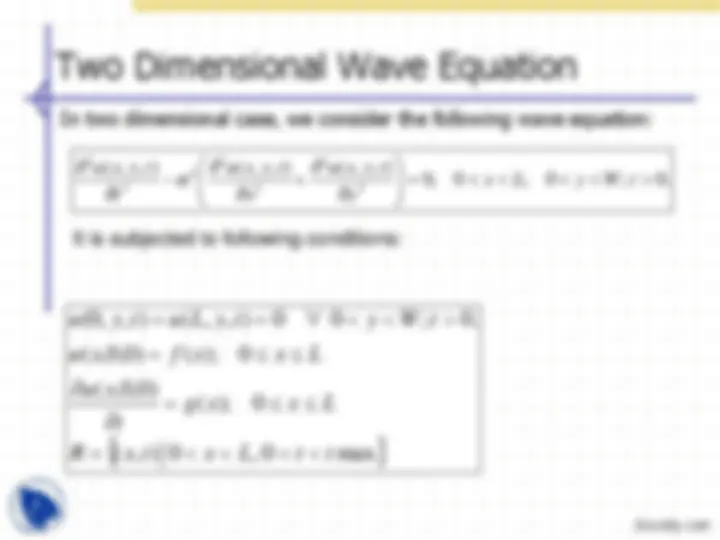
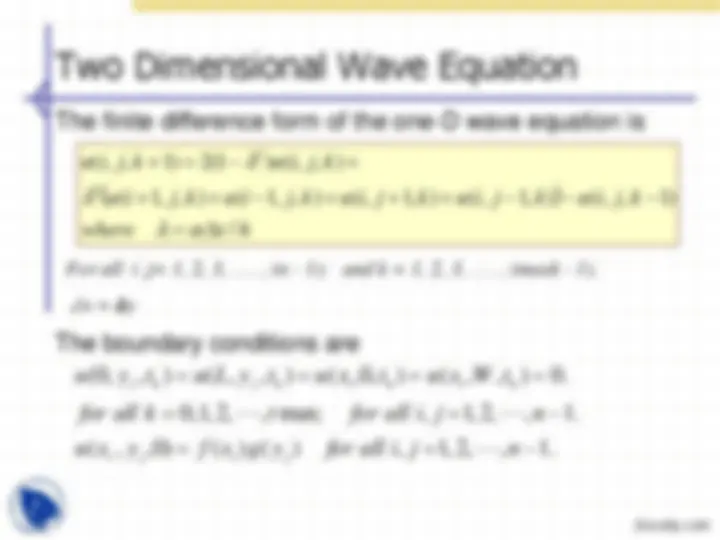
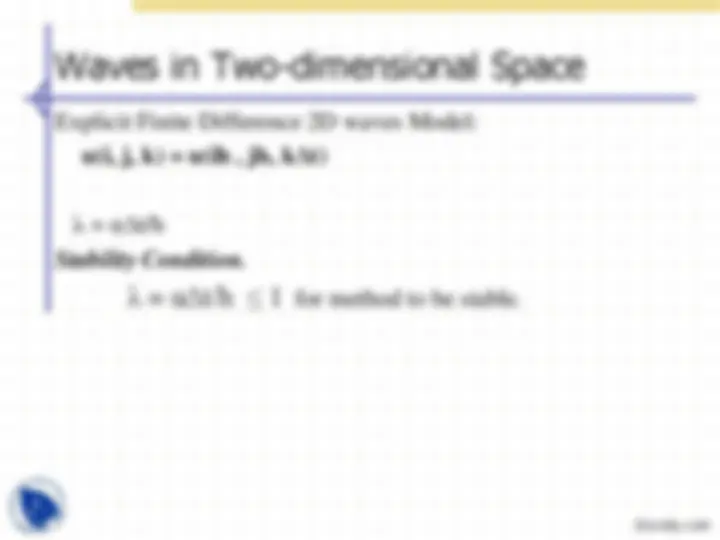
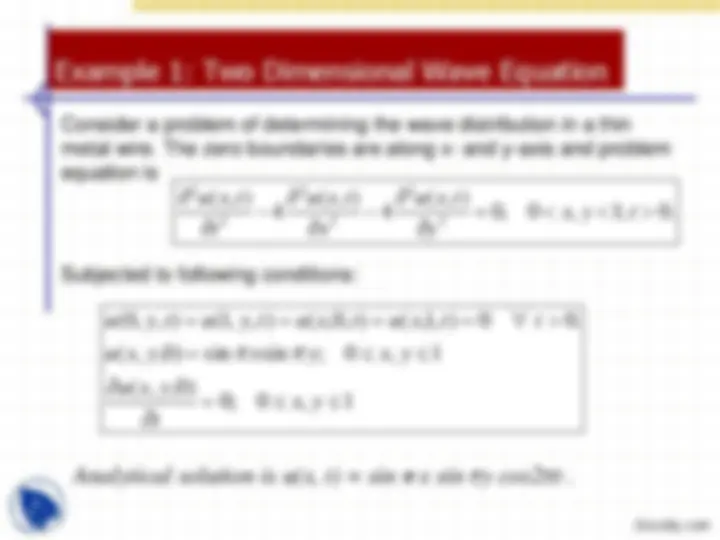


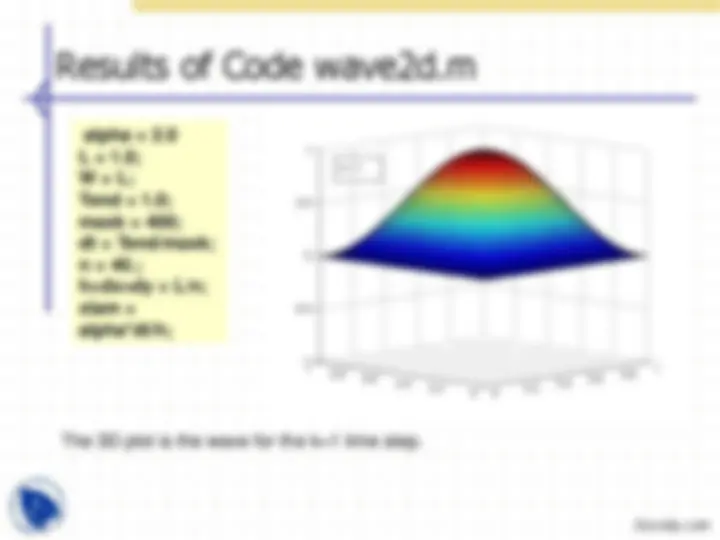

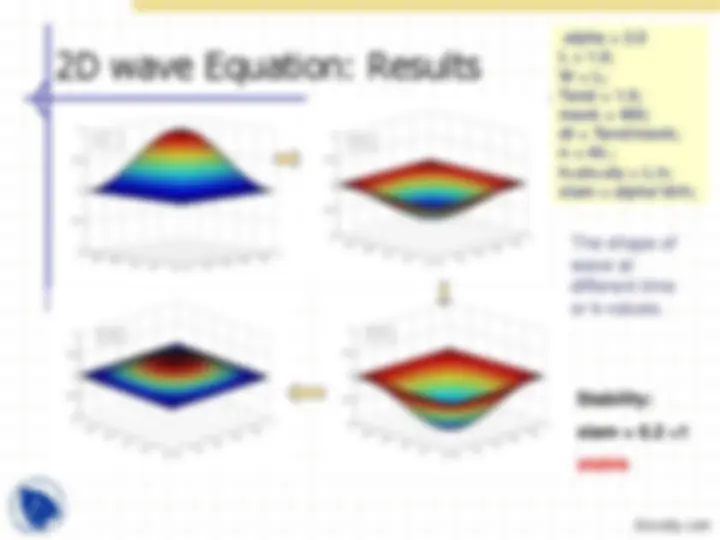
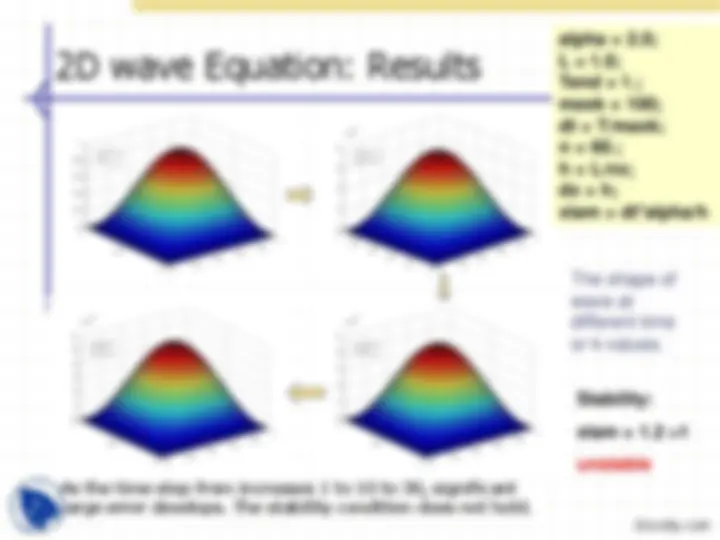

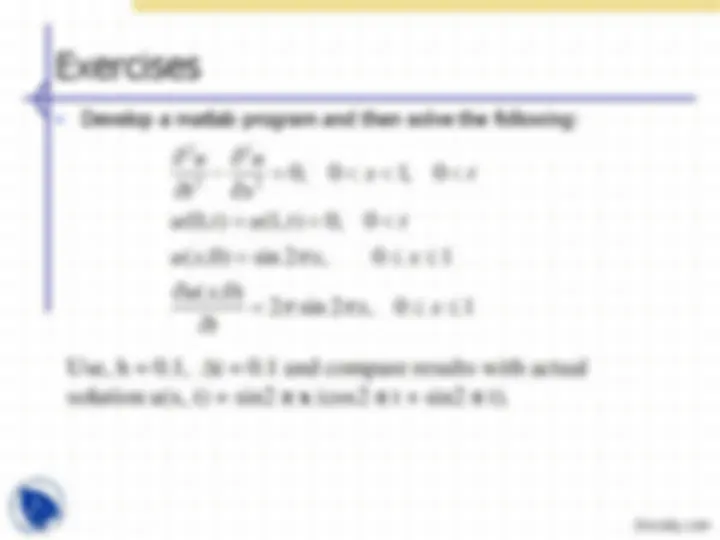


Study with the several resources on Docsity

Earn points by helping other students or get them with a premium plan


Prepare for your exams
Study with the several resources on Docsity

Earn points to download
Earn points by helping other students or get them with a premium plan
Community
Ask the community for help and clear up your study doubts
Discover the best universities in your country according to Docsity users
Free resources
Download our free guides on studying techniques, anxiety management strategies, and thesis advice from Docsity tutors
These lecture slides are delivered at The LNM Institute of Information Technology by Dr. Sham Thakur for subject of Mathematical Modeling and Simulation. Its main points are: Partial, Differential, Equations, PDE, Models, Hyperbolic, Wave, Dimensional, Boundary, Conditions
Typology: Slides
1 / 30

This page cannot be seen from the preview
Don't miss anything!























Topic: Wave Equation
Some PDE Models
( , ) ( , )
1 ( , ) 2
2
2
2
r t g r t t
r t
c
PDE: Wave Equation
2
2
2
2
2
2 2
2 2
z
u x y z t
y
u x y z t
x
u x y z t
t
u x y z t
u r t t
u x y z t
In two dimensional plane, it reduces to
2
2
2
2 ( , , ) 2 ( , , ) ( , , )
y
u x y t
x
u x y t
t
u x y t
This will be further simplified in one-dimensional wave as:
2
2 ( , ) 2 ( , )
x
u x y
t
u x y
One Dimensional Wave Equation
Finite Difference Method
The first step is to choose n and maxk integers.
Define step sizes h and k by
h = (b – a)/n ;
Δt = (d – c)/maxk
This means partitioning the interval (0, L) into n equal parts of width h and time interval (0, T) into maxk equal parts of width Δt.
x0 x1 x2 x3 x4 xn
0
1
2
3
m
This generates a grid.
Finite Difference Method
1 , 2 , ,max.
1 , 2 , ,.
y c j t for all j k
x a ih for all i n
i
i
0 1 2 3 4 n
0
1
2
3
m
4
2 4
2
2
4
2 4
2
2
2 2 2
2
x
h u
h
u i j u i j u i j
t
k u
k
u i j u i j u i j
x
u x t
t
u xi tj i j
Using above two formulas, the Poisson equation at point (xi, yj) is
For all i = 1, 2, 3,... , (n - 1); and j = 1, 2, 3,... , (m - 1)
(^00 1 2 3 4) n
1
2
3
m
2
2
2
Neglecting error and simplifying we get
For all i = 1, 2, 3,... , (n - 1); and j = 1, 2, 3,... , (maxk - 1)
(^00 1 2 3 4) n
1
2
3
m
2 2 2
Consider a problem of determining the wave distribution in a thin metal wire. The zero boundaries are along x- and y-axis and problem equation is
( , ) 0 1 , 0 max
( , 0 ) sin ; 0 1
R x t x t t
x t
u x
u x x x
u t u t t
2
2
2
2
Subjected to following conditions:
If n = m = 4, this problem has a grid shown in the figure.
The boundary conditions and mesh points are shown here.
Red mesh points need calculations. These are nine unknowns.
MATLAB Code wave1d.m -- continued
%%%%%%%%% initialize for t = 0 and t = 1 for i=2:nx w(i,1) = sin(pix(i)); w(i,2)= (1-xlamxlam)sin(pix(i)) ...
1D wave Equation: Results
alpha = 1.0; L = 1.0; T = 2.; maxk = 100; dt = T/maxk; nx = 20.; h = L/nx; dx = h; xlam = dtalpha/h*
The shape of wave at different time or k-values.
Stability:
xlam = 0.4 <
stable
Two Dimensional Wave Equation
( , ) 0 , 0 max
R x t x L t t
g x x L t
u x
u x f x x L
u y t u L y t y W t
0 , 0 ; 0 ; 0.
( , , ) ( , , ) ( , , ) 2
2 2
2 2 2
2
^
x L y W t y
u x y t x
u x y t t
u x y t
In two dimensional case, we consider the following wave equation:
It is subjected to following conditions:
Two Dimensional Wave Equation
0 , 1 , 2 , , max; , 1 , 2 , , 1.
u x y f x g y for all i j n
for all k t for all i j n
u y t u L y t u x t u x W t
i j i j
j k j k i k i k
where t h
u i j k u i j k u i j k u i j k u i j k
u i j k u i j k
/
( 1 , , ) ( 1 , , ) ( , 1 , ) ( , 1 , ) ( , , 1 )
( , , 1 ) 2 ( 1 ) ( , , ) 2
2
For all i ,j= 1, 2, 3,... , (n - 1); and k = 1, 2, 3,... , (maxk - 1).
Δx = Δy